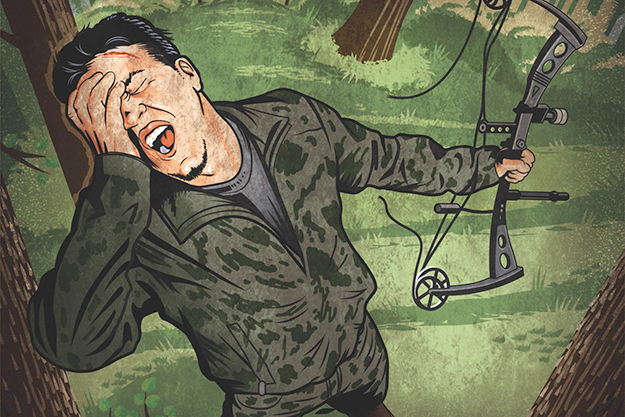Advertisement
While practising for hunting season one year, I shot more than 200 arrows a day, all summer long. During one of my indoor sessions, I drew back, settled on the target and heard a strange noise come from my bow. I didn’t have time to react and let down just as my bowstring blew apart and lashed across the top of my head. Stunned, I was trying to figure out what had happened when I felt blood running down my forehead.
Whether they practise regularly or dust off their bows just in time to hit the woods, many hunters often overlook preventative maintenance. While shooting a bow is relatively safe, it’s easy to neglect a few small things, which can turn a great day of shooting into a trip to the hospital. In my case, I should have waxed my string after every practice session, which would have prevented the fibres from breaking down. For my complacency, I ended up with six stitches. Here are three more common mishaps—and how to avoid them.
Advertisement
Frayed serving
“Serving” is extra thread wrapped around the main bowstring, typically at the nocking points, to protect it from abrasion. Often on hard cam bows, the serving will spread apart where it rolls over the corner of the cam, leaving the strings unprotected. Watch for this after every few days of shooting and bring your bow to a pro shop if the serving starts to separate (or learn how to serve your own strings). Otherwise, you’re asking for a snapped string to the face.
Broken arrow
Advertisement
Arrows, especially those made of carbon, are susceptible to hairline cracks, which can cause them to splinter apart and injure you when you release the bowstring. Any time you think a shaft might be damaged, test it for cracks by pinching the nock and the point of the arrow in either hand and flexing the shaft. If there’s any damage, you should hear a cracking noise.
Blown-up bow
Never draw back your bowstring and release it without an arrow. Without an arrow to absorb the transfer of energy, the bow will take the brunt of it instead. While it doesn’t always happen, this dry firing can cause the bow to break into flying pieces, potentially injuring you or others nearby. If you do draw back your bow without an arrow, perhaps to test the draw strength, use only your fingers and make sure you have a firm grip. After drawing, slowly ease the string back to its original position. Do not use a release, as it could malfunction and accidentally drop the string at full draw.

